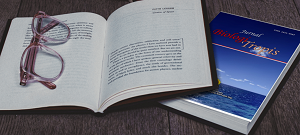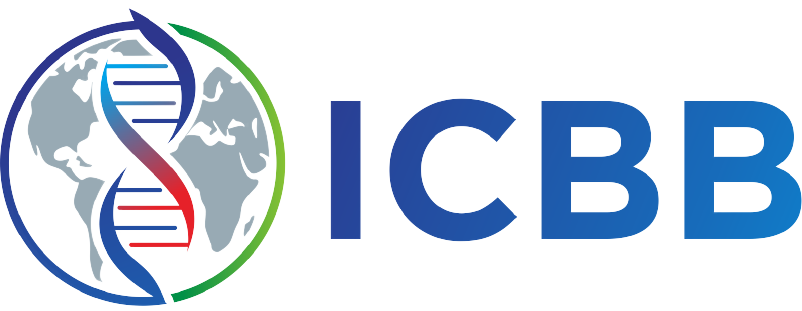Physical Characteristics of Antidesma spp. (Phyllanthaceae) Bogor Botanical Garden Collection
Authors
Riza Umami , Iin Pertiwi A Husaini , Irma Leilanai Eka PutriDOI:
10.29303/jbt.v25i3.9582Published:
2025-08-15Issue:
Vol. 25 No. 3 (2025): Juli-SeptemberArticles
Downloads
How to Cite
Downloads
Metrics
Abstract
Indonesia has a strategic position that supports high biodiversity and produces a variety of medicinal plants. Antidesma is one of the plants widely known in traditional medicine. This study aims to describe the morphological characteristics of antidesma, especially in the collection at the Bogor Botanical Gardens. This study was conducted at the Center for Applied Botany Research, BRIN, West Java, from November to December 2023. This study successfully identified eight species of Antidesma, namely Antidesma montanum var. Salicinum (Ridl.) Petra. Hoffm, Antidesma montanum Blume, Antidesma minus Blume (Euph.), Antidesma neurocarpum Miq., Antidesma stipulare Blume, Antidesma bunius (L.) Spreng, Antidesma tetrandum Blume, and Antidesma tomentosum Blume. Morphologically, Antidesma is a shrub to a woody tree with a round stem and crusty bark. The leaves are single, pinnate, and have smooth edges. The fruit is a drupe (bun) that ripens purplish-black, with a combination of sour, bitter, and sweet flavors. This discovery is important for species identification, exploration of local uses, and plant breeding programs to preserve Indonesia's native diversity and potential.
References
Ahmad, L. (2014). Biomassa dan karbon di hutan dataran rendah Desa Wungkolo, Pulau Wawonii, Sulawesi Tenggara. Jurnal Teknologi Lingkungan BPPT, 15(1), 27-34. 10.29122/jtl.v15i1.1454
Ariati, S. R., Astuti, R. S., Supriyatna, I., Yuswandi, A. Y., Setiawan, A., Saftaningsih, D., & Pribadi, D. O. (2019). An alphabetical list of plant species cultivated in the Bogor Botanic Gardens. Bogor: Center for Plant Conservation Botanical Garden.
Asian plant. (2025). Antidesma tomentosum. https://www.asianplant.net/ (Diakses pada 22 Juli 2025)
Blume, K. L. (1825). Bijdragen tot de flora van Nederlandsch Indië/uitgegeven door CL Blume.
Elya, B., Basah, K., Mun′ im, A., Yuliastuti, W., Bangun, A., & Septiana, E. K. (2012). Screening of α‐glucosidase inhibitory activity from some plants of Apocynaceae, Clusiaceae, Euphorbiaceae, and Rubiaceae. BioMed Research International, 2012(1), 281078. https://doi.org/10.1155/2012/281078
Elya, B., Katrin, K., & Bangun, A. (2012). Uji Aktivitas Penghambatan Enzim Alfaglukosidase Pada Beberapa Tanaman Suku Euphorbiaceae. Majalah Ilmu Kefarmasian, 9(3), 3. 10.7454/psr.v9i3.3350
Hamdayani, L. A., Tondok, G. P., & Rante, H. (2021). PENGARUH TINGKAT KEMATANGAN BUNNE (Antidesma bunius L.) SEBAGAI KOMPONEN PENGHASIL SENYAWA ANTIBAKTERI. Prosiding Penelitian Pendidikan dan Pengabdian 2021, 1(1), 23-27. https://l1nq.com/l9uIQ
HAMKA, Z. (2020). Skrining Antioksidan Ekstrak Buah Buni (Antidesma bunius (L) spreng.) Asal Kabupaten Enrekang dengan Metode Peredaman Radikal DPPH. Jurnal Kesehatan Yamasi Makassar, 4(2). https://l1nq.com/Xxbc3
Hans, A. S. (1970). Polyploidy in Antidesma (Euphorbiaceae). Caryologia, 23(3), 321-327. 10.1080/00087114.1970.10796374
Indrawati, I., & Rizki, A. F. M. (2017). Potensi ekstrak buah buni (Antidesma bunius L) sebagai antibakteri dengan bakteri uji Salmonella thypimurium dan Bacillus cereus. Jurnal Biodjati, 2(2), 138-148. 10.15575/biodjati.v2i2.1309
Islam, S., Ahammed, M. S., Sukorno, F. I., Koly, S. F., Biswas, M. M., & Hossain, S. (2018). A review on phytochemical and pharmacological potentials of Antidesma bunius. J Anal Pharm Res, 7(5), 602-604. 10.15406/japlr.2018.07.00289
Ismail, N., Azmi, N. H., Mastuki, S. N., Saad, N., & Razis, A. F. A. (2019). Antidesma montanum: biochemistry and bioactive compounds. In Wild Fruits: Composition, Nutritional Value and Products (pp. 359-365). Cham: Springer International Publishing. 10.1007/978-3-030-31885-7_27
Syafi'i, W., & Sari, R. K. Uji toksisitas zat ekstraktif kayu kopo (Eugenia cymosa LAMK.) dan kiseuheur (Antidesma tetrandrum BL.) menggunakan Brine Shrimp Lethality Test (BSLT). https://l1nq.com/21aS7
Mauldina, M. G., Sauriasari, R., & Elya, B. (2017). α-Glucosidase inhibitory activity from ethyl acetate extract of Antidesma bunius (L.) Spreng stem bark containing triterpenoids. Pharmacognosy magazine, 13(52), 590. 10.4103/pm.pm_25_17
Munawaroh, E., & Astuti, I. P. (2021). Kajian keanekaragaman jenis Baccaurea spp., pemanfaatan, potensi dan upaya konservasinya di Kebun Raya Bogor. In Prosiding Seminar Nasional PMEI ke (Vol. 63, p. 70). 10.30743/best.v7i2.10126
Mutaqin, A. Z., Muharani, A. Z., & Husodo, T. (2016). Studi Etnobotani Pemanfaatan Tumbuhan Rempah-Rempah sebagai Obat oleh Masyarakat Desa Pangandaran Kecamatan Pangandaran Kabupaten Pangandaranl. In Seminar Nasional Biologi V UNNES: Hilirisasi Hasil Penelitian Biologi da Pendidikan Biologi melalui Akselerasi Inovasi Berwawasan Konservasi (pp. 288-297). https://encr.pw/G33K1
Nguyen-Ngoc, H., Le-Thi-Phuong, T., Vu-Van, T., Pham-Ha-Thanh, T., & Nguyen-Huu, T. (2024). Phytochemical and Pharmacological Review of the Genus Antidesma. Natural Product Communications, 19(4), 1934578X241247990. 10.1177/1934578X241247990
Peraturan Presiden Nomor 93 Tahun 2011 tentang Kebun Raya.
Purnomo, D. W., Magandhi, M., Kuswantoro, F., Risna, R. A., & Witono, J. R. (2015). Pengembangan koleksi tumbuhan kebun raya daerah dalam kerangka strategi konservasi tumbuhan di Indonesia. Buletin Kebun Raya, 18(2), 111-124. https://encr.pw/E3PBW
Putri, A. U. B., Witno, W., Karim, H. A., & Kamis, H. (2024). Diversity Of Local Tree Species In Faruhumpenai Nature Reserve, East Luwu. Jurnal Penelitian Kehutanan BONITA, 6(1), 18-29. 10.55285/bonita.v6i1.2712
Rachmadiyanto, A. N., Wanda, I. F., Rinandio, D. S., & Magandhi, M. (2020). Evaluasi kesuburan tanah pada berbagai tutupan lahan di Kebun Raya Bogor. Buletin Kebun Raya, 23(2), 114-125. 10.14203/bkr.v23i2.263
Rahman, A., Malik, A., & Ahmad, A. R. (2016). Skrining fitokimia dan uji aktivitas antioksidan ekstrak etanolik buah buni (Antidesma Bunius (L.) Spreng). Jurnal Fitofarmaka Indonesia, 3(2), 159-163. 10.33096/jffi.v3i2.497
Retnowati, A., Rugayah, J. S. R., & Arifiani, D. (2019). Status keanekaragaman hayati Indonesia: Kekayaan jenis tumbuhan dan jamur Indonesia.
Royal Botanic Gardens, Kew. (2025). Antidesma montanum var. salicinum (Ridl.) Petra Hoffm. Plants of the World Online. https://powo.science.kew.org/taxon/urnlsid:ipni.org:names:1009480-1 (Diakses pada 21 Juli 2025)
Royal Botanic Gardens, Kew. (2025). Antidesma minus Blume Plants of the World Online. https://powo.science.kew.org/taxon/urnlsid:ipni.org:names:339002-1 (Diakses pada 21 Juli 2025).
Royal Botanic Gardens, Kew. (2025). Antidesma tomentosum Blume Plants of the World Online.https://powo.science.kew.org/taxon/urn:lsid:ipni.org:names:339134-1 (Diakses pada 22 Juli 2025).
Royal Botanic Gardens, Kew. (2025). Antidesma
tomentosum Blume Plants of the World Online. https://powo.science.kew.org/taxon/urn:lsid:ipni.org:names:339015-1 (Diakses pada 24 Juli 2025).
Saleh, M. F. R. M., & Hartana, A. L. E. X. (2017). Keanekaragaman jenis tumbuhan Cagar Alam Pangi Binangga, Sulawesi Tengah. Media Konservasi, 22(3), 286-292. 10.29244/medkon.22.3.286-292.
Sari, I. P., Hidayati, A. R., & Muliasari, H. (2023). Perbandingan Aktivitas Antioksidan Infusa Simplisia Segar dan Simplisia Kering Daun Buni (Antidesma bunius L. Spreng) dengan Metode DPPH. Jurnal Sains Dan Kesehatan, 5(5), 605-614. 10.30872/jsk.v5i5.439
Sukari, A., Rahmani, M. A. W. A. R. D. I., Manas, R., & Takahashi, S. H. O. Z. O. (1992). Toxicity studies of plant extracts on insects and fish. Pertanika, 15, 41-41.
SUSILO, A., & DENNY, D. (2016, December). Diversity and potential use of plants in secondary natural forest in RPH Cisujen KPH Sukabumi, West Java. In Prosiding Seminar Nasional Masyarakat Biodiversitas Indonesia (Vol. 2, No. 2, pp. 256-262). 10.13057/psnmbi/m020223
Tamin, R. P., Puri, S. R., & Hardiyanti, R. A. (2019). Exploration of Tree Species in Muaro Jambi Temple Complex. Media Konservasi, 24(3), 245-251. 10.29244/medkon.24.3.245-251
Tandilolo, S., & Wulandari, R. Rukmi.(2013). Komposisi Jenis Vegetasi Habitat Anoa (Bubalus sp.) di Cagar Alam Pangi Binangga Kabupaten Parigi Moutong. Warta Rimba, 1(1), 1-8. core.ac.uk/download/pdf/294923544.
Tropical Plants Database. (2025). Antidesma tomentosum Blume. Diakses pada 22 juli 2025 dari https://tropical.theferns.info/viewtropical.php?id=Antidesma+tomentosum
Wasis, B., & Sandra, E. (2024). Ekologis, tanah dan tempat tumbuh, budidaya dan manfaat tumbuhan pasak bumi (Eurycoma longifolia) pada hutan hujan tropis. Bogor: Universitas IPB. https://www.researchgate.net/profile/Basuki-Wasis/publication/380542701
Widihasputri, R., Elya, B., & Azizahwati, A. (2012). Uji Penghambatan Aktivitas alfa-glukosidase Ekstrak dan Fraksi Daun Antidesma neurocarpum Miq. Majalah Ilmu Kefarmasian, 9(1), 2. 10.7454/psr.v9i1.3360
Widyatmoko, D. (2019, May). Strategi dan inovasi konservasi tumbuhan Indonesia untuk pemanfaatan secara berkelanjutan. In Prosiding SNPBS (Seminar Nasional Pendidikan Biologi dan Saintek) (pp. 1-22). http://hdl.handle.net/11617/11287
Zaman, F., Sarkar, C., Hossain, R., Molla, S., Das, A. K., Shuvo, A. P. R., Bappi, M. H., Atolani, O., Islam, M. T., & Rouf, R. (2022). Phytochemical evaluation and pharmacological activities of Antidesma montanum Blume leaf extract. Acta Biol Marisiensis, 5, 1-16. DOI: 10.2478/abmj-2022-0001
License
Copyright (c) 2025 Riza Umami, Iin Pertiwi A Husaini, Irma Leilanai Eka Putri

This work is licensed under a Creative Commons Attribution 4.0 International License.

Jurnal Biologi Tropis is licensed under a Creative Commons Attribution 4.0 International License.
The copyright of the received article shall be assigned to the author as the owner of the paper. The intended copyright includes the right to publish the article in various forms (including reprints). The journal maintains the publishing rights to the published articles.
Authors are permitted to disseminate published articles by sharing the link/DOI of the article at the journal. Authors are allowed to use their articles for any legal purposes deemed necessary without written permission from the journal with an acknowledgment of initial publication to this journal.


























